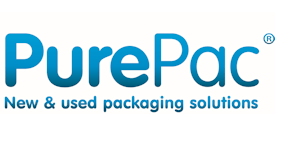Are you ready?
Industry research suggests there is a lack of awareness amongst businesses regarding the implementation of this new tax. This is worrying as the new tax comes into force in less than two months. Plastic Packaging Tax (PPT) will impact many UK manufacturers of plastic packaging, importers of plastic packaging, business customers of manufacturers and importers of plastic packaging, and consumers who buy plastic packaging or goods in plastic packaging in the UK.
In this blog, we’ll give you a brief overview of PPT. We hope it helps and points you in the right direction.
What is PPT?
PPT is a new tax that will apply to plastic packaging manufactured in, or imported into the UK, that does not contain at least 30% recycled plastic. PPT aims to reduce single-use plastic and encourage the use of recycled plastic.
Plastic packaging is packaging that is predominantly plastic by weight, e.g., most of the container/item is made with plastic. As such, the tax will not apply to any plastic packaging which contains 30% or more recycled plastic, or any packaging which is not predominantly plastic by weight.
Imported packaging will also be subject to PPT whether it is filled or unfilled. This measure is likely to have an impact in many sectors, some may not even be aware of it including manufacturers/suppliers of consumer goods, food and drink and online retailers when the goods they purchase are transported in some form of plastic packaging.
A few examples:
- materials that are packaged in plastic containers eg. Plastic drums or IBCs
- food products contained in plastic containers, trays or wrappers
- shrink wrap
- plastic pallets
Who is affected?
- UK producers of plastic packaging
- Importers of plastic packaging
- Business customers of producers or importers of plastic packaging
What is the rate of PPT tax?
PPT will be payable based on the plastic weight and the rate will be calculated at £200 per tonne.
Are there any exemptions?
Yes, but only a few:
- Transport packaging or tertiary packaging within the meaning of regulation 3(2)(c) of the Packaging (Essential Requirements) Regulations 2015 (S.I. 2015/1640), or road, rail, ship and air containers
- Long term packaging (an example many are referring to is an Apple AirPod case, the holder for wireless headphones)
- The immediate packaging of human medicinal products. Meaning the medicine must come in direct contact with the packaging, for example if a plastic drum is being used with an inner liner, the inner liner has direct contact not the drum. Meaning the drum will still be subject to PTT
What about UN and foodgrade packaging?
Many key manufacturers are currently working through the necessary stages and requirements to achieve UN approval on plastic packaging containing 30% recycled materials. A small selection of these models will be available later this year.
Producing foodgrade packaging with 30% recycled materials will not be immediately available. The law stipulates the parts of the container which come in direct contact with the food material must be virgin new; this is not the case with recycled materials. The only way around this is to introduce multiple layer containers, with the inner layer being manufactured with virgin new polymer and outer layer manufactured from recycled materials. The blow moulding technology is already in use, we imagine it will just be a case of how to adapt it.
What should businesses do?
- Undertake a review of supply chains to assess what parts of your business might be impacted
- Review the products you manufacture/import to determine if PPT applies
- Question if your contracts allow for the cost to be passed on
- Calculate how the tax will impact your margins
- Determine if you have the correct systems in place to capture the information to comply fully as of 1 April 2022
- Understand what due diligence processes will need to be put in place to ensure that you avoid becoming jointly and severally liable for the non-compliance of others
What is joint or secondary liability?
Although it is the importer or manufacturer of packaging components that are primarily liable for PPT, others in the supply chain can be made secondarily liable or jointly and severally liable for the tax where they know or ought to have known that PPT has not been paid.
The provisions apply not just to those involved in the production or importation of the packaging components but also to those involved in transporting or storing products and operators of online marketplaces or fulfilment businesses.
This secondary liability and joint and several liability provisions mean that any related business needs to conduct due diligence to ensure that it cannot be said that they ought to have known that PPT was not paid.
More information
We’re not experts on this subject and are still gathering all the relevant information and guidance in respect to how this will impact PurePac. However, you can find more information here Plastic Packaging Tax – GOV.UK (www.gov.uk). The new tax proposals will be reviewed in Parliament on 23rd February at which point further information should be released to industry.
One thing we do know for certain is that there is a cost implication for everyone, as the extra tax will simply be moved along each rung of the supply chain adding additional cost to each product and eventually ending up with the consumer.





Recent Comments